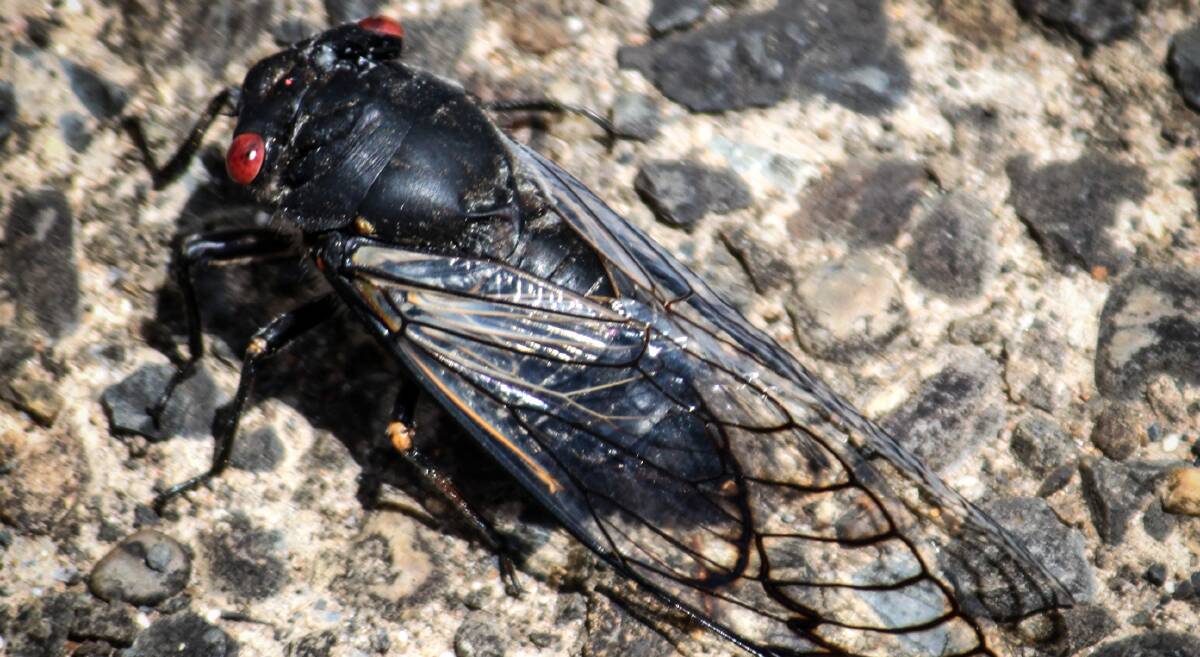
Numbers of cicadas vary considerably from year to year. This summer the buzzing, droning and beeping of cicadas seems more prolific than usual.
Subscribe now for unlimited access.
$0/
(min cost $0)
or signup to continue reading
The main species is the red-eyed cicada, or redeye. This one makes a loud buzz or drone, interspersed with several loud staccato beeps or yodels. It finishes by slowing and fading away.
The insect itself is mostly black with black-veined clear wings and two prominent red eyes. It is only about 5cm long, small for the volume of sound it produces.
The cicadas have preferences for different species of trees. Earlier this week, we heard the “redeye” calling loudly from river red gums near Clunes. The noise was so loud it drowned out a lot of bird calls. Only a few kilometres away we stopped in forest dominated by grey box trees, and there it was silent – no cicadas.
Later that day the insects were heard at another bushland location where the dominant eucalypt was messmate. No doubt a short study could be done to discover the trees favoured by these sap-sucking insects.
Smooth-barked eucalypts – such as red gum, manna gum and candlebark – are probably favoured over boxes and stringybarks because they have bark that is easier to pierce for sap sucking.
These insects call any time of the day. On Christmas Day, they were heard at first light and were still calling after sunset. Their calling is clearly influenced by temperature. Also, one calling cicada can influence others to start. Only the males call.
Cicadas always seem to be more numerous in and around Melbourne and Geelong than they are in the Ballarat district.
There are many different species, some large and others small. North America has a red-eyed cicada too, but it is a different species with a different sound.
SEEDS SCARCER
Many local wattles have produced less seed than usual this year. Very noticeable is the blackwood, which is normally covered in seed every summer. This year, there is very little to be seen.
Both the golden wattle and the hedge wattle have also produced less seed than usual.
This relative scarcity of wattle seed is probably related to the wet spring we had, when rain and dull weather resulted in poor pollination at flowering time.
The common and weedy Cootamundra wattle has been affected too.
In the Wombat Forest, however, gang gang cockatoos are managing to find the ripening seed of the hop wattle and are climbing quietly around the shrubs in their search. Several of these handsome red-crested birds were observed.

